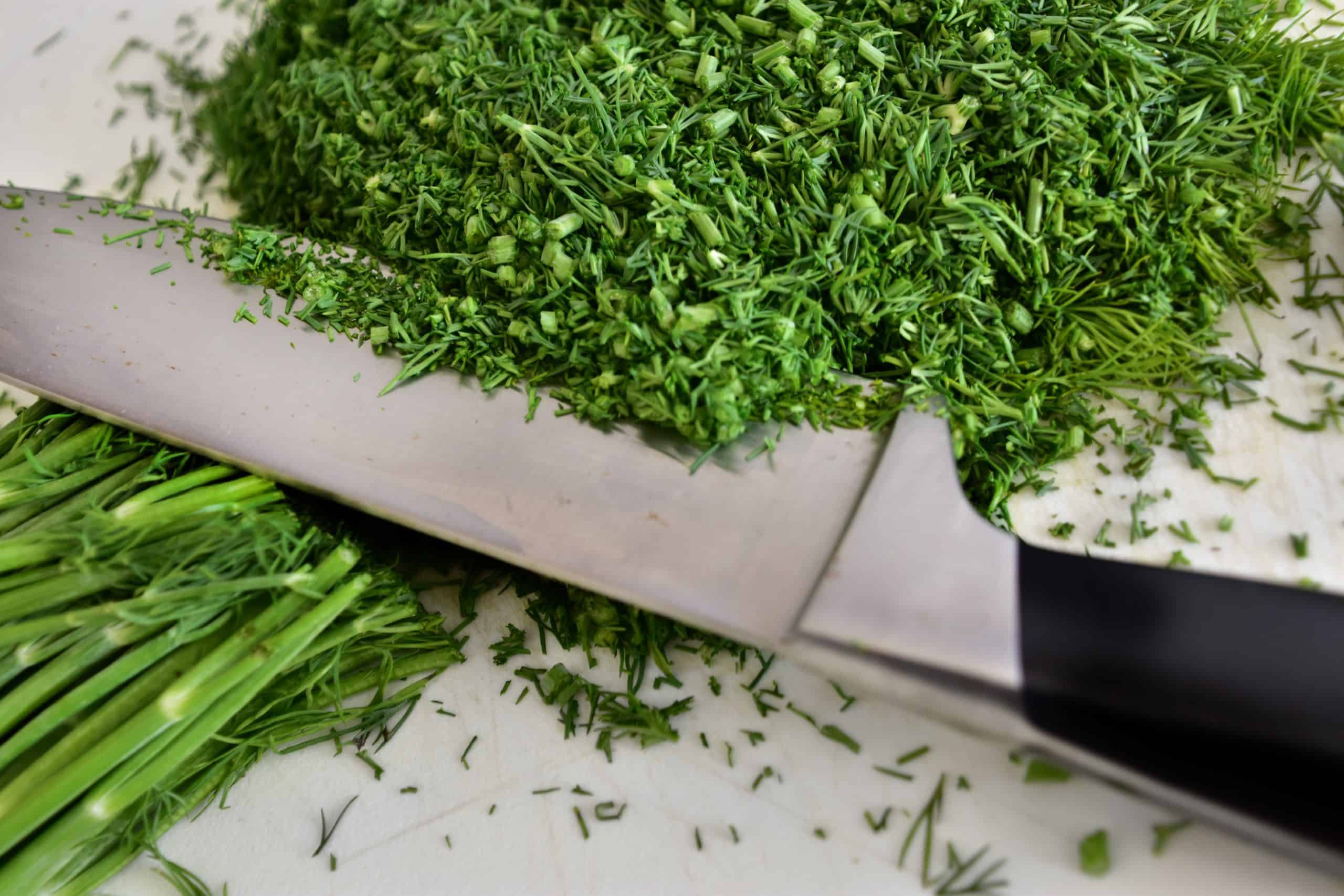
Introduction
When it comes to finding the best kitchen knives, two of the most popular styles are German and Japanese knives. Whether you are looking for a durable chef’s knife, a sharper paring knife, or even a decorative sushi knife, both German and Japanese knives offer unique advantages. But which is the right option for your needs?
This guide will help you weigh the benefits of each type of blade so you can make an informed decision on which one is better suited to your own preferences. We’ll look at everything from the construction and design of both styles to compare their strength and sharpness. You’ll also learn how to care for these knives properly so they last you a lifetime of cooking adventures!
History and Origins of German and Japanese Knives
German knives have been used since the 14th century, when they were created by master blacksmiths. These knives were made of high-carbon steel, making them easier to sharpen and hold an edge longer than other knives. The shape of classic German knives typically feature a wide, sturdy blade with a curved edge that tapers slightly upwards near the tip.
Japanese knives are known for their high quality and are considered some of the best blades in the world. Founded upon centuries old tradition, each knife is crafted by a master craftsman according to strict guidelines. Japanese knife blades are generally thinner than their German counterparts and have a straighter profile along the cutting edge due to its hardening process which creates smaller micro-serrations along the blade allowing it to cut food more cleanly. Japanese knives may also have a Granton edge which helps ingredients from sticking to the blade as you cut them up.
Materials Used in German and Japanese Knives
German knives are usually made from high carbon steel, meaning that they can hold their edge for a very long time. This means that you don’t have to sharpen them as often and they will last you a lot longer. However, these typically heavier knives are also not as durable in terms of being able to take on tough tasks like slicing through bones. They are usually shorter than Japanese knives but have a wider blade.
Japanese knives are great for precision work because of their long and slim blades which give more control over the knife while cutting. They’re also lightweight, making them ideal for intricate chopping tasks. Usually made with better stainless steel than German ones, they are easier to maintain and less likely to corrode or rust when exposed to moisture or oils in food.
Overview of Most Popular German and Japanese Knives
German and Japanese knives are two of the most sought-after knife styles available. Both styles come with distinct advantages and disadvantages that must be taken into account when purchasing a new knife. German knives are known for their robust build, durability, and versatility, while Japanese blades are widely renowned for their precision and cutting power.
German knives feature high carbon stainless steel composition that is intended to withstand tough use where other knife styles might falter. The blade features a full tang, which is a single piece of metal extending from the tip of the blade to the end of any handle scales, providing superior strength and balance. Additionally, the bolster provides an important safeguard between the heel of the handle and additional finger protection against slipping when cutting through hard materials.
Japanese knives can sometimes be found constructed with Damascus steel, often featuring hand-crafted etchings on the blade as well as an acute cutting edge angle that generally falls somewhere between 9-14 degrees depending on the design of its Rockwell ratings, making them great at slicing ingredients thinly and effortlessly. A common drawback of Japanese knives is their more brittle nature compared to German counterparts, although some will include air pockets or chiselled patterns along the length of either side for added resilience and sharpening accuracy when honing in on honbayashi angles higher than 15 degrees.
When considering what knife style to purchase, it’s important to take into consideration your needs regarding comfort level and experience level with handling each type . Ultimately both types have their own unique benefits will make for performing various kitchen tasks feel easier or more successful.
How to Choose the Right German or Japanese Knife for You
Whether you are a professional chef or an avid home cook, having the right knife is essential to getting the job done efficiently. German and Japanese knives have gained popularity among cooks because they offer a wide range of features that make them suitable for various tasks in the kitchen. When trying to decide between German and Japanese knives, there are many factors to consider.
The first important factor is blade construction. Many German knives have a more traditional beveled edge which allows them to have strong durability and retain their sharpness longer. However, Japanese blades typically use a harder steel which requires sharpening more often but creates a thinner edge that can easily cut food without tearing it apart.
Another aspect of difference between these two types of knives is weight and handle construction. German knives tend to be heavier due to thicker blade construction, whereas Japanese blades generally weigh less because of their thinness. Handle grips also vary significantly between these two styles; German handles provide extra security for larger hands and those who prefer heftier grip thanks to designs ideal for multiple cuts in one place, whereas Japanese handles demonstrate lighter control over finer cuts with straighter designs created for detailed work.
Finally, versatility is another key consideration when choosing the right knife for your needs. German knives offer great versatility due to wider blade arrays while Japanese knives are versatile too with added functionality such as specialized tips and grinding capabilities which makes them popular not only amongst chefs but amongst sushi chefs as well. Ultimately, you must consider what type of cuisine and tasks you’ll need your knife for before making a decision on whether to go with German or Japanese blades.
Care and Maintenance Tips for German and Japanese Knives
1. Keep knives sharp – A dull knife is more dangerous than a sharp one because it requires excessive force to be used for cutting, making it prone to slipping and causing an accident. Sharpening your knives regularly at least once a year will help maintain their edge and keep them safe and effective.
2. Clean knives properly – Make sure to always wash and dry knives after every use, as you should with all kitchen utensils. Japanese knives must be wiped clean immediately after use, while German knives can be soaked in warm soapy water for a few minutes before being washed in the regular way. In either case, always make sure to dry the blade completely afterward with a towel or paper towel to prevent rust.
3. Properly store your blades – It’s important to store your blades so that they stay in tip-top shape for years to come! For German knives which are thicker and often heavier, choose slotted boards or magnetic racks which can withstand their weight, while wooden storage blocks work best for Japanese knives since they tend to be lighter yet subectable to staining from wood grain patterns over time if not taken care of.
4. Sharpen as needed – Sharpening is essential for keeping your kitchen knife in peak condition! A whetstone works well for honing the edges of both German and Japanese knives regularly, though other sharpening systems may need different treatments depending on what you have available at home. Be sure to oil the stones regularly when using them so they don’t become clogged up with dust debris during use.
Final Thoughts
An investment in a quality German or Japanese knife is one that should last you a lifetime. Whether you are an amateur cook or professional chef, incorporating these knives into your culinary routine will provide unmatched performance and precision while slicing and dicing. The high-carbon steel of German blades is renowned for its durability and strength while the hardened steel of Japanese knives offer exceptional sharpness. Both types boast a lightweight feel, which makes them not only comfortable to use but also easier to handle. Furthermore, the styles offered by brands such as Wusthof, Zwilling and Shun are often beautifully ornate with curved handles creating an impressive aesthetic value to your collection and kitchen decor. Ultimately, adding a German or Japanese knife to your arsenal is an investment that every home cook can appreciate for many years to come.















